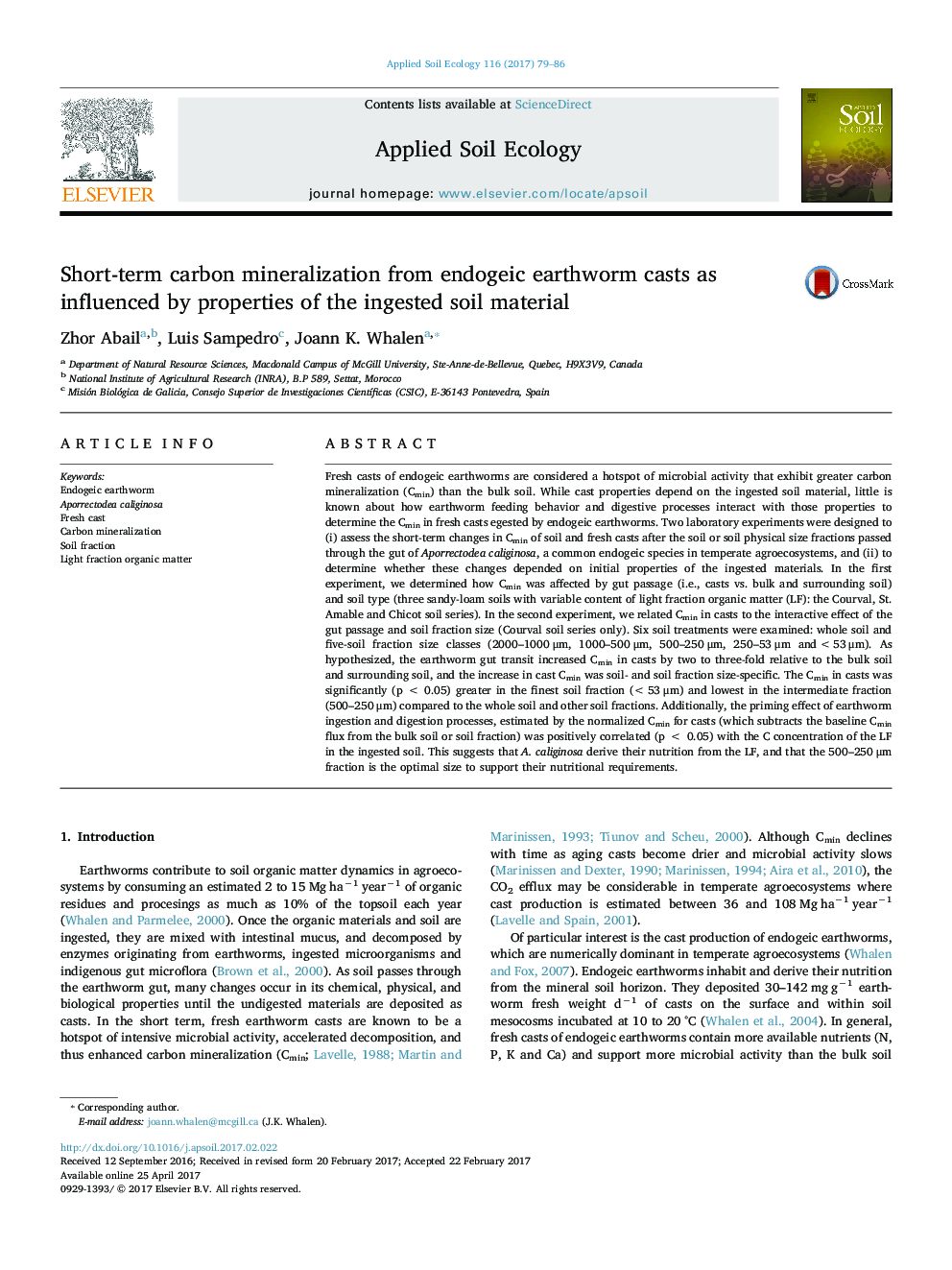| Article ID | Journal | Published Year | Pages | File Type |
|---|---|---|---|---|
| 5742701 | Applied Soil Ecology | 2017 | 8 Pages |
â¢Fresh earthworm casts have 2-3-fold higher carbon mineralization than bulk soil.â¢Respiration in casts was related to the light fraction organic matter pool in soil.â¢Endogeic earthworms derive nutrition from soil fractions from 500 to 250 μm in size.â¢Evidence of selective digestion of particle size fractions by endogeic earthworms.
Fresh casts of endogeic earthworms are considered a hotspot of microbial activity that exhibit greater carbon mineralization (Cmin) than the bulk soil. While cast properties depend on the ingested soil material, little is known about how earthworm feeding behavior and digestive processes interact with those properties to determine the Cmin in fresh casts egested by endogeic earthworms. Two laboratory experiments were designed to (i) assess the short-term changes in Cmin of soil and fresh casts after the soil or soil physical size fractions passed through the gut of Aporrectodea caliginosa, a common endogeic species in temperate agroecosystems, and (ii) to determine whether these changes depended on initial properties of the ingested materials. In the first experiment, we determined how Cmin was affected by gut passage (i.e., casts vs. bulk and surrounding soil) and soil type (three sandy-loam soils with variable content of light fraction organic matter (LF): the Courval, St. Amable and Chicot soil series). In the second experiment, we related Cmin in casts to the interactive effect of the gut passage and soil fraction size (Courval soil series only). Six soil treatments were examined: whole soil and five-soil fraction size classes (2000-1000 μm, 1000-500 μm, 500-250 μm, 250-53 μm and <53 μm). As hypothesized, the earthworm gut transit increased Cmin in casts by two to three-fold relative to the bulk soil and surrounding soil, and the increase in cast Cmin was soil- and soil fraction size-specific. The Cmin in casts was significantly (p < 0.05) greater in the finest soil fraction (<53 μm) and lowest in the intermediate fraction (500-250 μm) compared to the whole soil and other soil fractions. Additionally, the priming effect of earthworm ingestion and digestion processes, estimated by the normalized Cmin for casts (which subtracts the baseline Cmin flux from the bulk soil or soil fraction) was positively correlated (p < 0.05) with the C concentration of the LF in the ingested soil. This suggests that A. caliginosa derive their nutrition from the LF, and that the 500-250 μm fraction is the optimal size to support their nutritional requirements.
